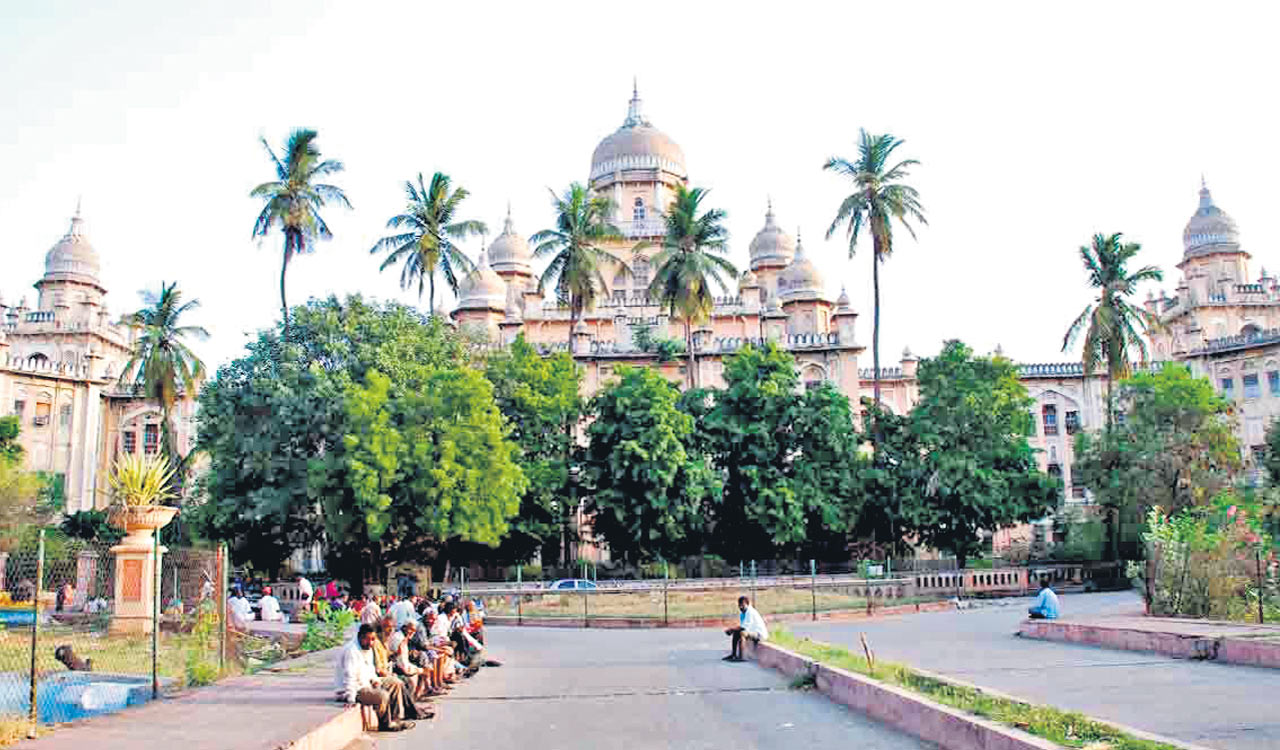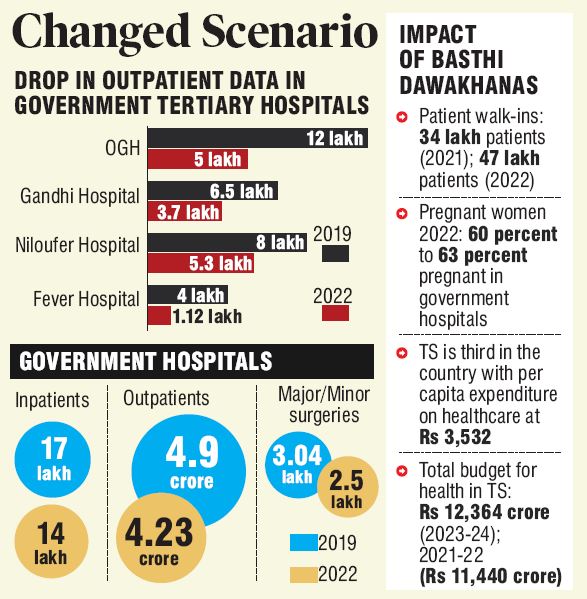In 2022, nearly 17 lakh patients from Telangana availed of inpatient facilities compared to 14 lakh in 2021 in government hospitals
Published Date – 08:00 AM, Mon – 23 October 23

Hyderabad: Consistent efforts to upgrade medical infrastructure in districts by converting community health centres into Area Hospitals, adding Basthi Dawakhanas in urban and Palle Dawakhanas in rural regions, bolstering manpower requirements, strengthening diagnostic laboratories and new medical colleges, have turned out to be quite effective in decentralizing government healthcare services in Telangana.
Till a few years ago, tertiary government hospitals in Hyderabad have been the most preferred referral hospitals. Patients from districts consistently used to get referred to government hospitals in Hyderabad, even for minor elective procedures, putting government healthcare facilities in Hyderabad under a lot of pressure.
With super-specialty doctors and health care facilities available in the districts itself, senior health officials here said that referrals to tertiary hospitals in Hyderabad have reduced, allowing superspecialty doctors to focus on high-end surgeries related to orthopedics, cardiology, nephrology, and organ transplantation.
While the walk-ins to outpatient wings at Gandhi Hospital, Chest Hospital, Fever Hospital, and other tertiary facilities have reduced, the demand for high-end surgeries in orthopaedic, cardiology, organ transplants has gone up in Hyderabad. “New high-end medical infrastructure has increased the expectations among patients towards government hospitals. It’s a challenge, as demand for high-end surgeries like organ transplantation, heart procedures, gastroenterology, and heart procedures among patients has gone up,” says Superintendent, OGH, Dr B Nagender.
As a result of the demand, this year, all tertiary government hospitals have recorded a significant jump in major and minor surgeries.
In 2022, nearly 17 lakh patients from Telangana availed of inpatient facilities compared to 14 lakh in 2021 in government hospitals. Similarly, the patient inflow in OP departments in 2022 rose to 4.9 crore compared to 4.23 crore in 2021.
The major and minor surgeries combined, taken up at government hospitals in 2022 were at a record 3.04 lakh while in 2021 it was around 2.5 lakh. The percentage of pregnant women preferring government hospitals also increased and at present stands between 60-63 percent.
Earlier, the percentage of pregnant women availing health care facilities in government hospitals used to hover between 35 and 40 percent. The per capita allocation of funds in the healthcare sector is Rs 3,532, which is the third highest in the country, and this year a staggering Rs 12,364 crore was allocated to the health sector in the budget.




